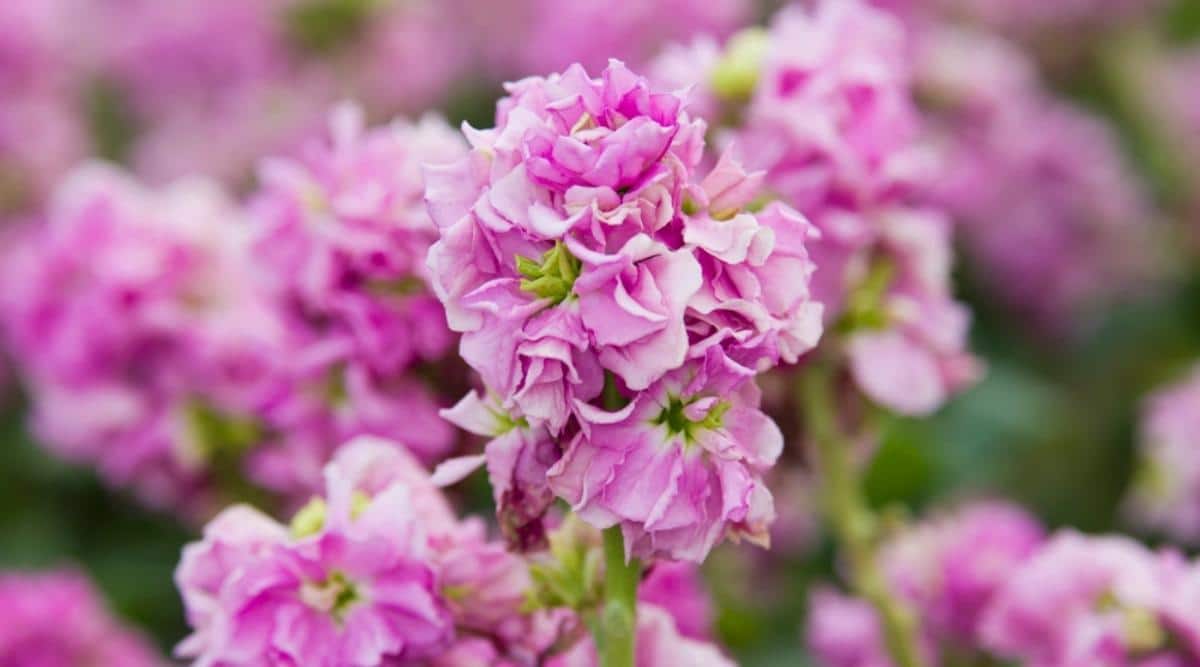lagunabeachcanow.com – Gillyflower, also known as Dianthus or “Pink,” is a beloved flower known for its sweet fragrance and beautiful, often vibrant blooms. Gillyflowers have been cherished for centuries for their pleasant scent, making them a favorite in cottage gardens, flower beds, and as cut flowers. These hardy perennials or biennials are easy to grow and offer a variety of colors, shapes, and sizes to enhance any garden space. Whether you’re an experienced gardener or a beginner, Gillyflowers are an excellent choice for adding beauty and fragrance to your outdoor space.
Appearance and Characteristics
Gillyflowers come in a wide array of colors, including shades of pink, red, white, lavender, and purple. They typically feature fringed or serrated petals, giving them a delicate, lacy appearance. The blooms can be single or double and often have a slightly ruffled texture, adding to their visual appeal. The flowers grow on tall, sturdy stems that rise above the foliage, which is usually composed of narrow, blue-green leaves.
The plant itself is compact, growing to heights ranging from 6 inches to 2 feet, depending on the variety. Gillyflowers are known for their sweet, clove-like fragrance, which can fill the air on warm summer days, making them a sensory delight in the garden.
Planting and Growing Conditions
Gillyflowers are relatively easy to grow, making them an excellent choice for both novice and experienced gardeners. They prefer full sun, requiring at least 6 hours of direct sunlight each day for optimal blooming. Gillyflowers thrive in well-drained, slightly alkaline soil, and they do best in fertile, sandy, or loamy soil that doesn’t stay soggy.
They can be started from seeds indoors in early spring or sown directly in the garden after the last frost. If you’re planting Gillyflowers as seedlings or transplants, it’s important to space them about 8 to 12 inches apart to allow for proper air circulation and to prevent overcrowding. These flowers are hardy in USDA zones 4 through 9, meaning they can tolerate a range of climates, though in colder areas, they may need to be grown as annuals.
Care and Maintenance
Gillyflowers are relatively low-maintenance plants that thrive with minimal care. Regular watering is important, especially during dry spells, but be sure not to over-water, as this can lead to root rot. The soil should be kept moderately moist but not waterlogged.
Fertilizing Gillyflowers is typically unnecessary, but a light application of balanced fertilizer can encourage better blooms during the growing season. It’s also helpful to remove dead flowers regularly, a process known as deadheading, to keep the plant looking tidy and to encourage further blooming.
Pruning is generally not required, but cutting back the plants after blooming has finished can help them maintain a compact shape and keep them healthy for the following season.
Pests and Problems
Gillyflowers are relatively pest-resistant, though they can occasionally be affected by common garden pests like aphids, slugs, and snails. Aphids can be controlled with insecticidal soap or by attracting natural predators, like ladybugs, to the garden. Slugs and snails can be managed by removing debris from around the plants and using organic slug bait.
Gillyflowers may also be susceptible to powdery mildew, particularly in humid conditions or if air circulation is poor. To minimize the risk of fungal diseases, ensure that the plants are spaced adequately and avoid watering overhead. If powdery mildew appears, it can often be treated with a fungicide or by removing affected leaves.
Uses in Landscaping
Gillyflowers are incredibly versatile and can be used in many different landscaping styles. Their compact size and bright blooms make them ideal for planting in garden borders, along walkways, or in containers. They can also be incorporated into mixed perennial beds, where their fragrant flowers can complement other plants in the garden.
These flowers are particularly well-suited for cottage gardens, where their charming, old-fashioned appearance adds to the nostalgic and romantic feel of the space. Their pleasant fragrance makes them perfect for planting near patios, seating areas, or entrances, where you can enjoy their scent as you relax outdoors.
Additionally, Gillyflowers are popular as cut flowers in floral arrangements due to their vibrant colors, ruffled petals, and sweet fragrance. They are often used in bouquets for weddings, parties, and other special occasions.
Conclusion
Gillyflowers are a beautiful and fragrant addition to any garden. With their charming appearance, delightful scent, and easy-care nature, they are perfect for gardeners looking to enhance their outdoor space with color and fragrance. Whether planted in a sunny border, mixed flower bed, or container, Gillyflowers provide months of beauty and delight. Their versatility, low-maintenance care, and ability to attract pollinators make them a must-have in any garden, while their popularity as cut flowers ensures that they can be enjoyed indoors as well.
